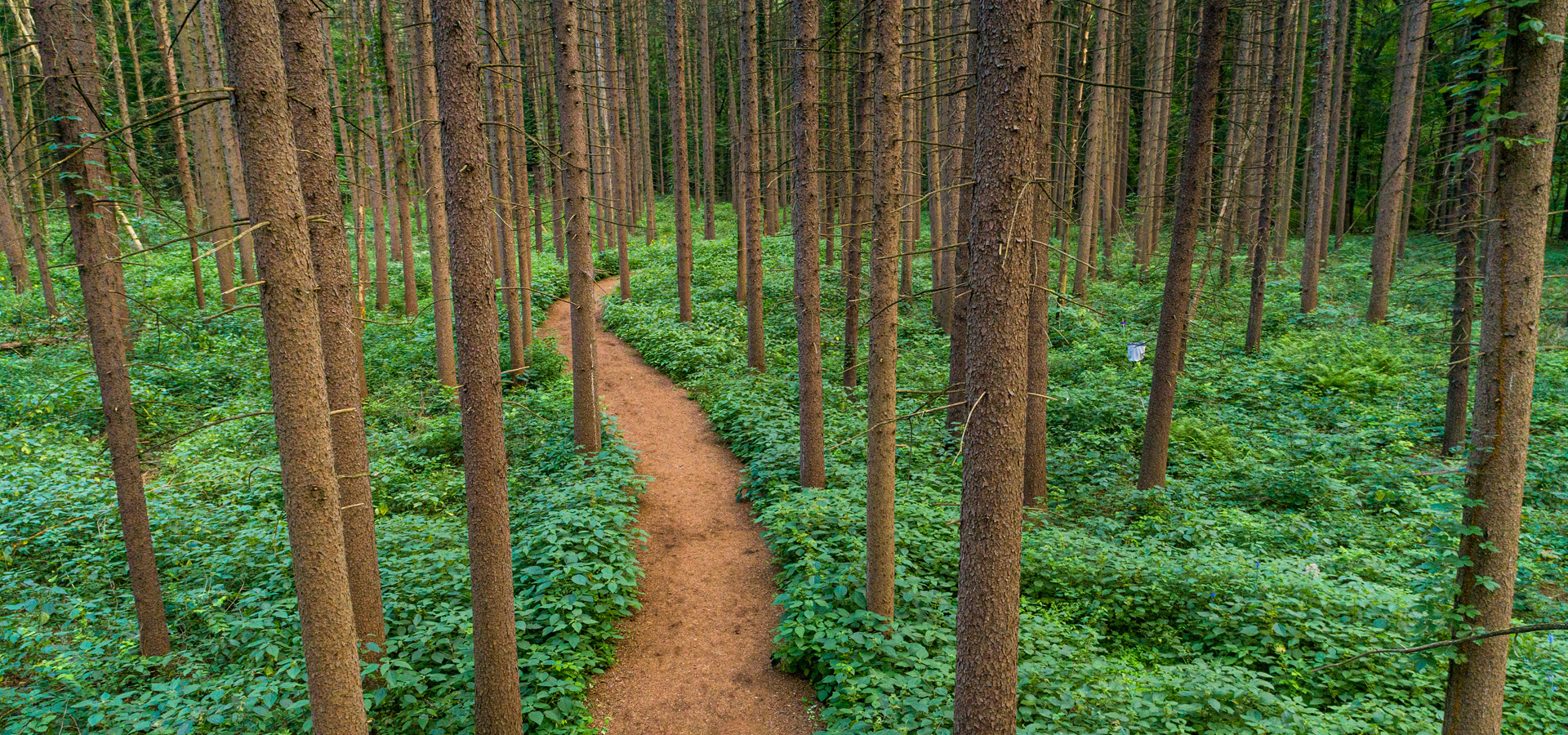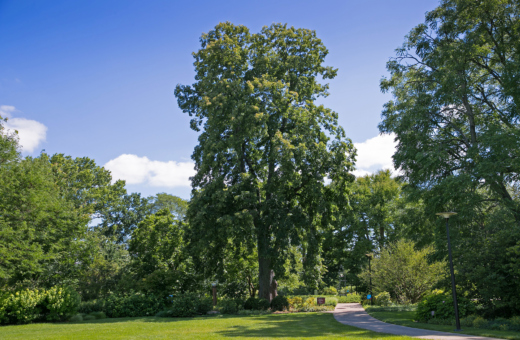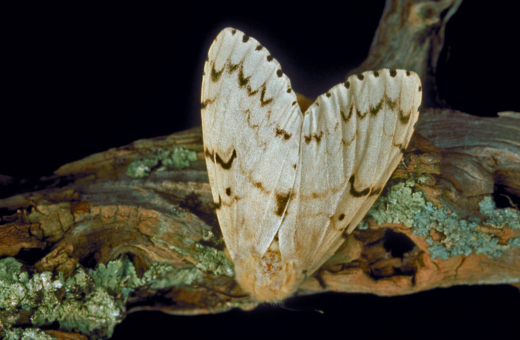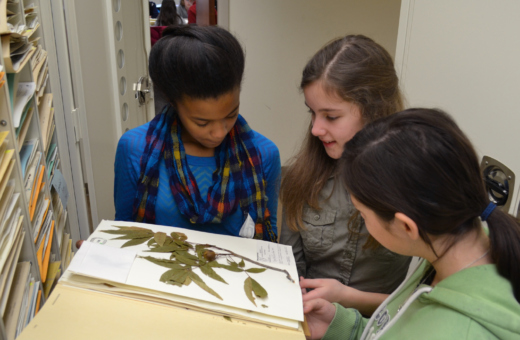August 9, 2022
Regular visitors of The Morton Arboretum are often eager to share their favorite trails, landmarks, or places to spend time on Arboretum grounds. In addition to being beautiful and inspiring, a number of these locations also have historical significance. As we are commemorating the 100th anniversary of the Arboretum as an institution, it is an especially good time to note some of these features of interest.
Here are a few historical highlights of the Arboretum’s East Side:
A short walk from the Visitor Center, the Four Columns stand as a focal point on the hill to the east of the Research and Administration Center. This much-loved Arboretum landmark was built in 1960 under the chairmanship of Sterling Morton, son of founder Joy Morton. Inspiration for the columns came during his visit to Schӧnbrunn Palace in Vienna, Austria. He made note of the iconic Gloriette in the Schӧnbrunn gardens and felt a similar architectural statement would be ideal for the hill at the top of the Arboretum’s Hedge Garden (site of the soon-to-be Grand Garden).
Architect Arthur Myhrum designed the Four Columns after studying columns of the Parthenon as well as the four columns salvaged from the former home of Chicago businessman Potter Palmer, which stood in the Chicago apartment of Sterling’s daughter, Suzette. These influences came together in the Four Columns structure visitors enjoy today. In later years, Suzette would say the columns represented her grandfather, Joy Morton, and his brothers Paul, Mark, and Carl.
The Spruce Plot in the Arboretum’s East Woods, near P12 on the East Side Main Route, is another favorite destination of many members and visitors. Maybe you’ve enjoyed strolling through the Spruce Plot, but have you ever wondered how it came to be? During the 1800s, much of what is now the East Woods served as woodlots for nearby homesteaders. A few of these irregularly shaped wooded parcels had been completely cleared by their owners before Joy Morton began buying the land for the Arboretum.
The Spruce Plot represents one of these formerly clear-cut woodlots. The Arboretum planted the spruces in the 1920s as an experimental forestry plot to test trees for their lumber potential. Because of their close planting, the trees shade out each other’s lower branches. This causes most needles to form near the treetops, resulting in the Spruce Plot’s enchanting, cathedral-like atmosphere.
Just a bit farther along the East Side Main Route is the Big Rock Visitor Station, built in 2000 to be an interpretive center and trailhead for the Heritage and Woodland trails, both of which lead to Big Rock. The story of Big Rock dates back approximately 15,000 years. This fourteen-ton piece of granite was carried to its location in a glacier during the Wisconsin Glaciation and left behind as the ice melted. (Much of the Arboretum’s rolling topography is a result of this glaciation).
We know Big Rock is far away from its place of origin, likely Wisconsin or southern Canada because granite is not native to the area around the Arboretum, which has a bedrock of limestone. If you walk the Heritage Trail, you’ll also encounter trees that predate European settlement, a former agricultural field now being restored to prairie, and access to a service road that leads to the former site of an 1800s sawmill along the DuPage River East Branch.
Interested in knowing more about the natural and architectural history of the Arboretum?
The staff of the Sterling Morton Library would be delighted to assist you. Or check out ACORN, a database that provides online access to the special collections of the Sterling Morton Library and other Arboretum resources including images, videos, and documents.
You can learn more about the Arboretum’s ecology from local experts through the Arboretum’s education programs and Natural Areas Conservation Training Program. You can discover ways that you can be part of the work to conserve and restore the natural heritage of the region.



